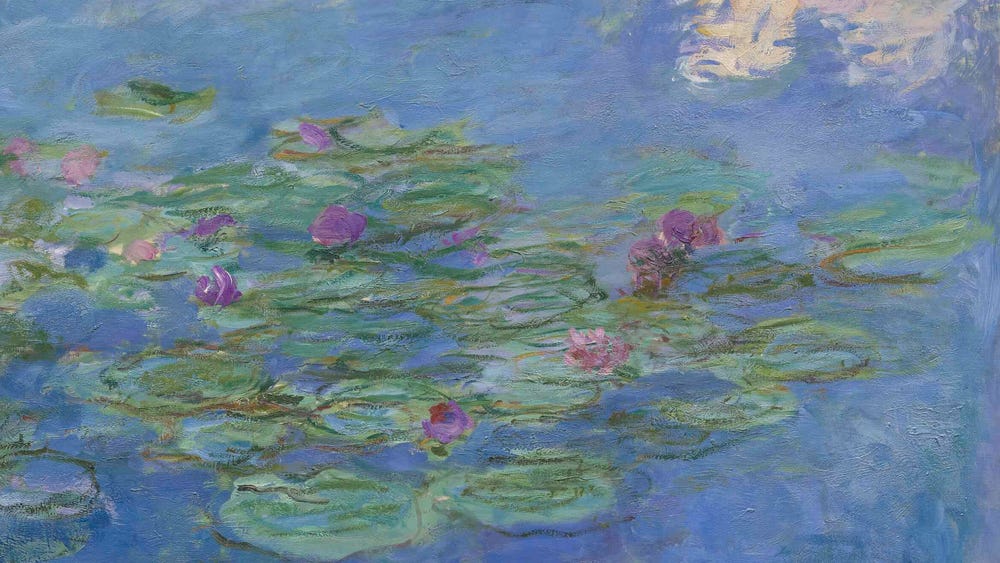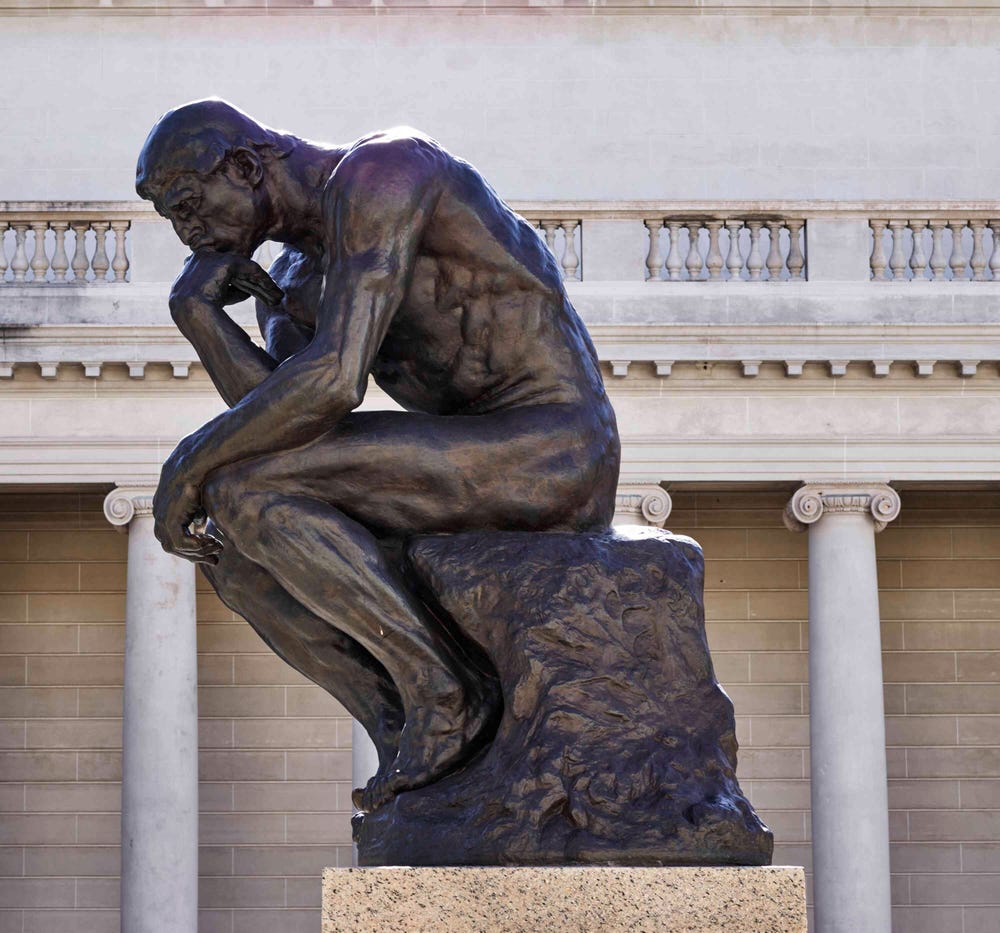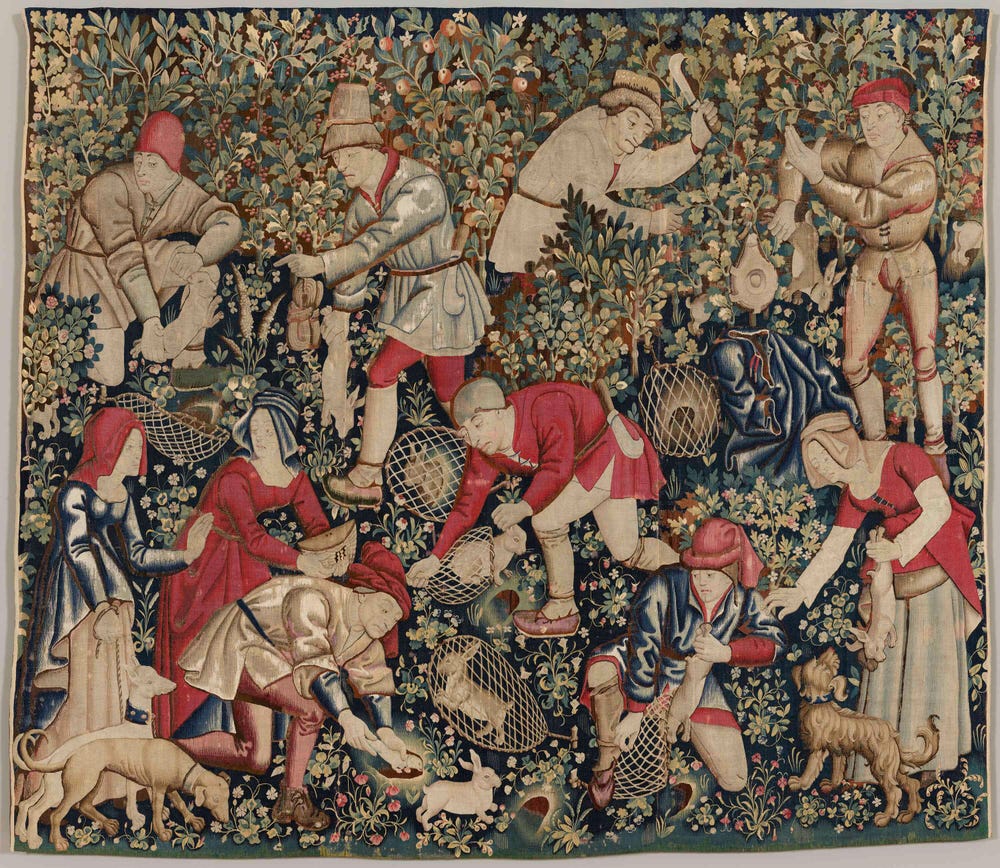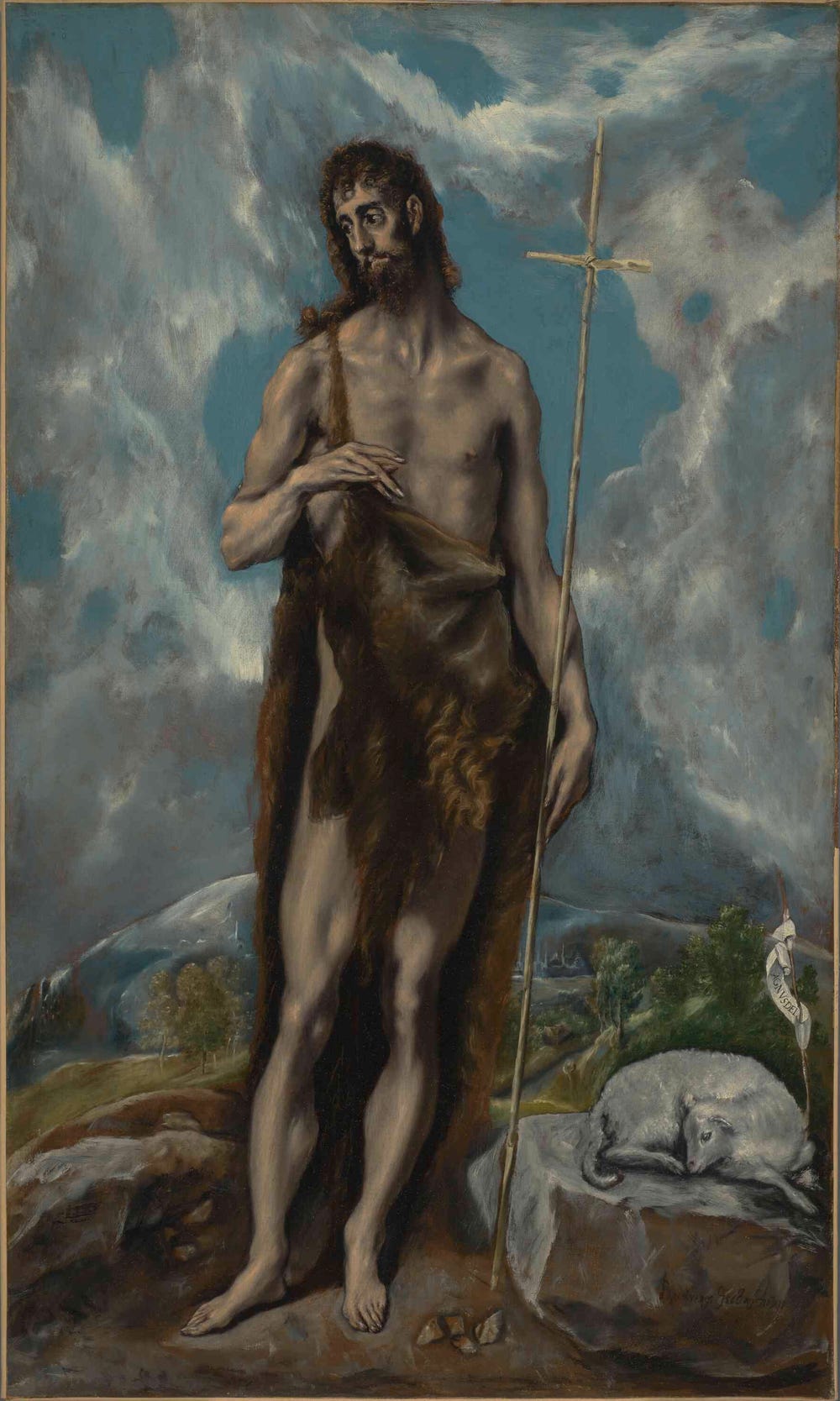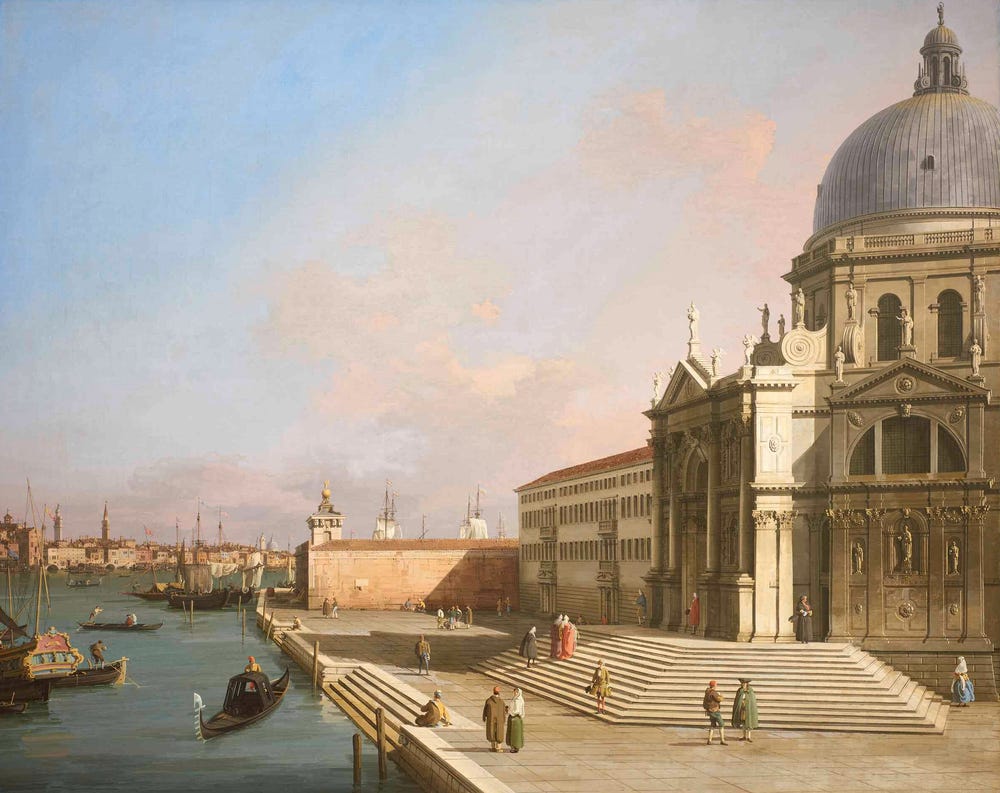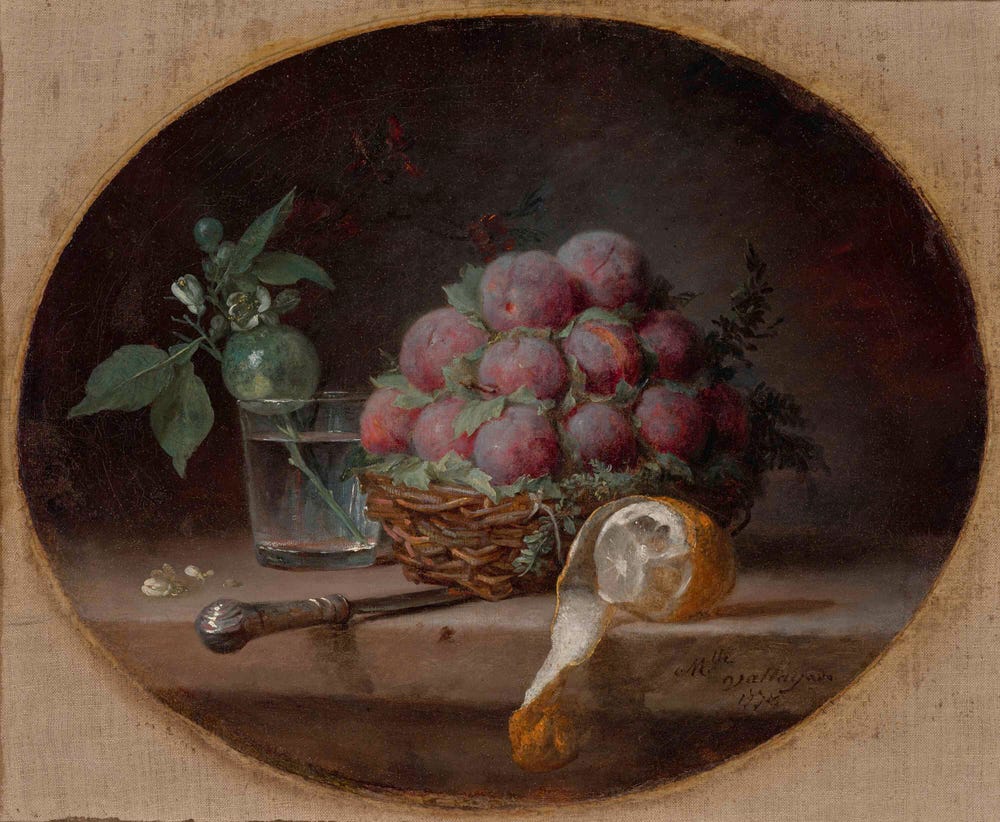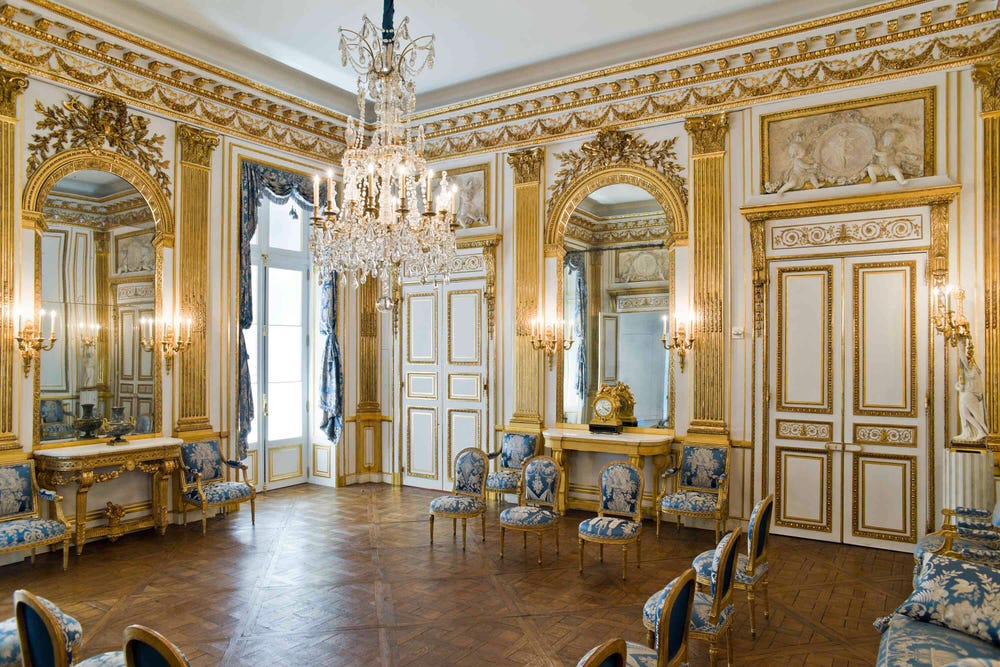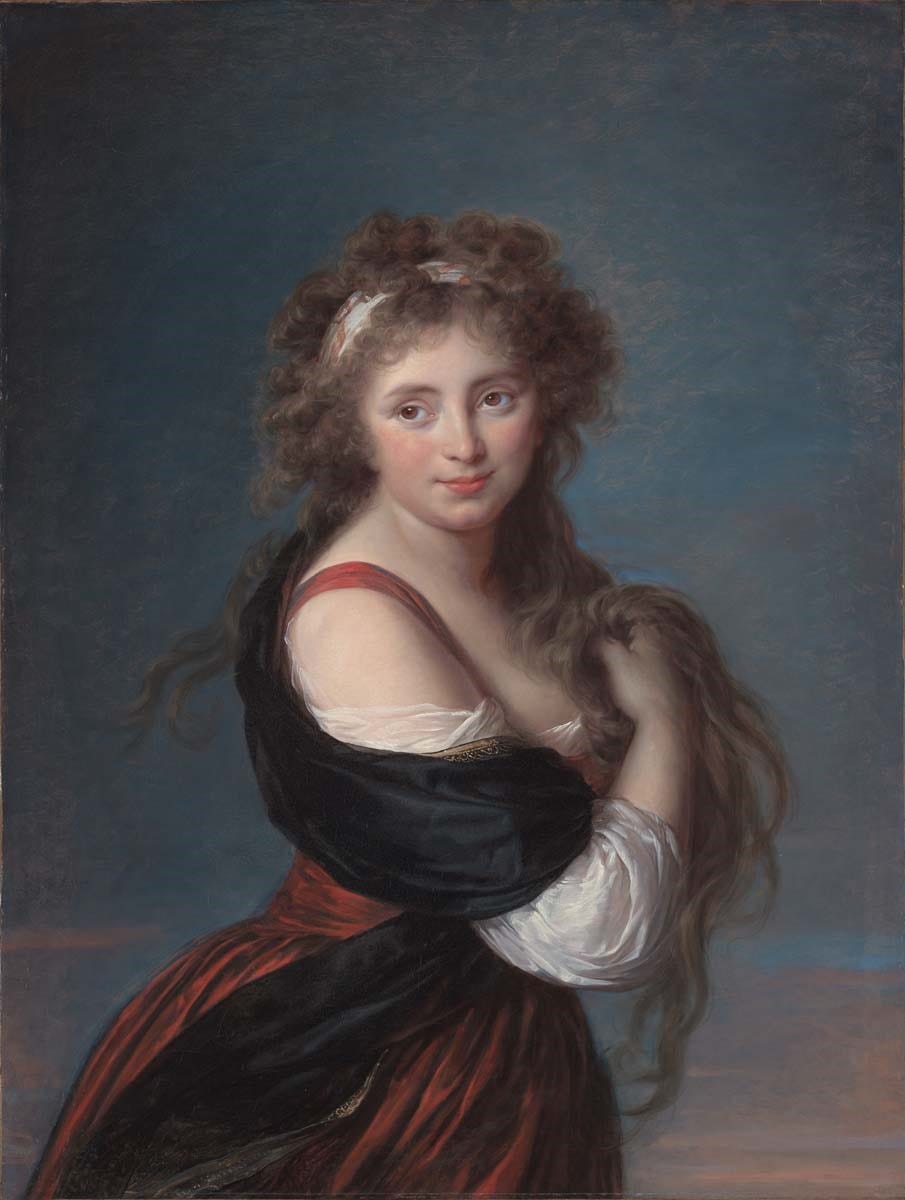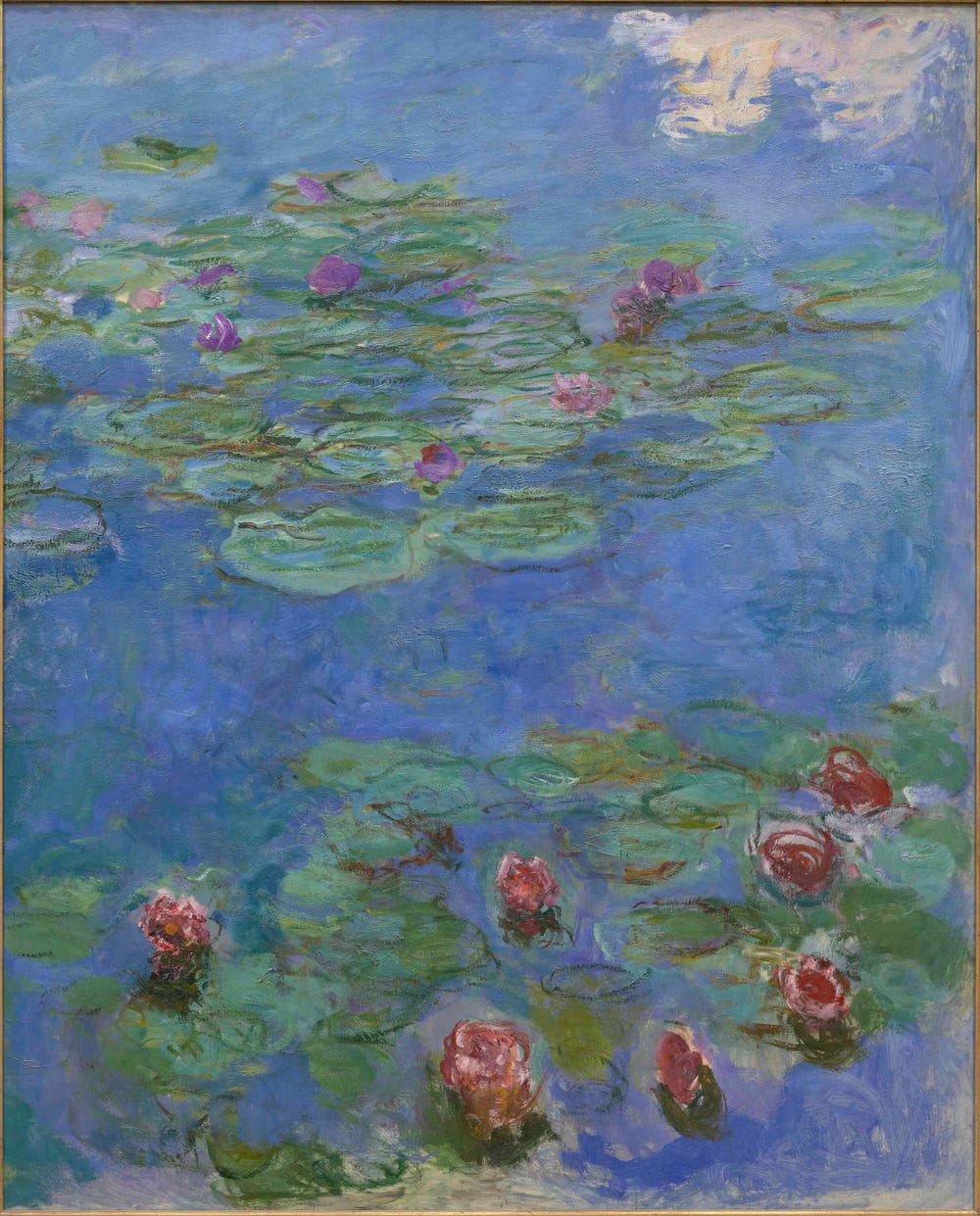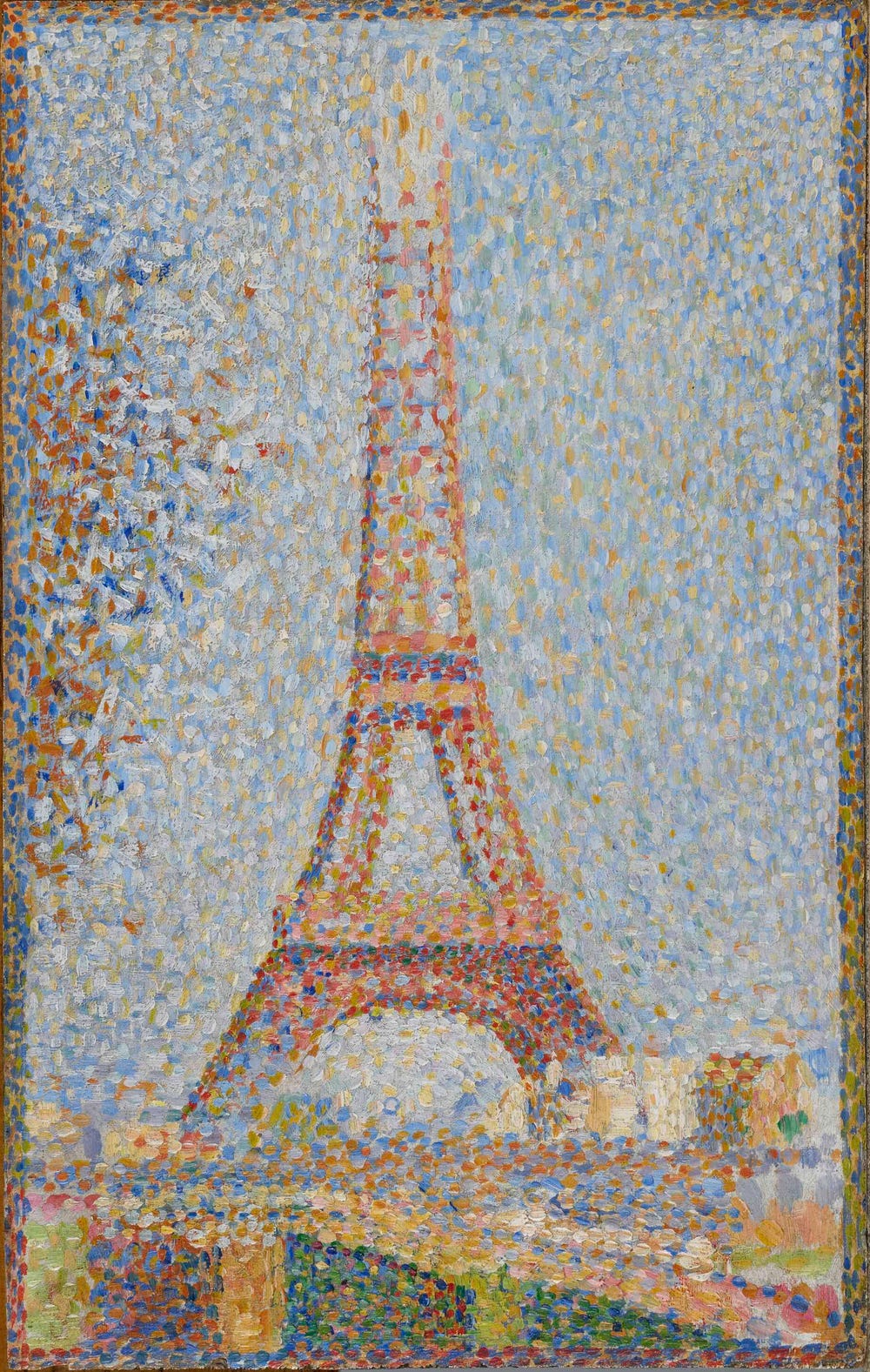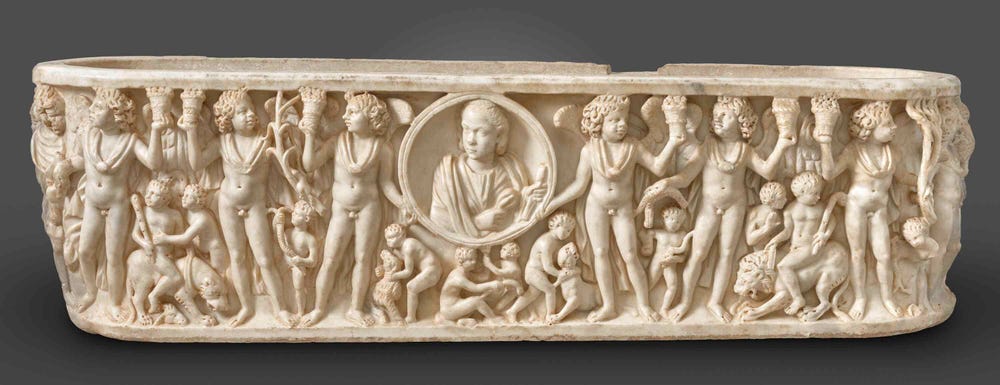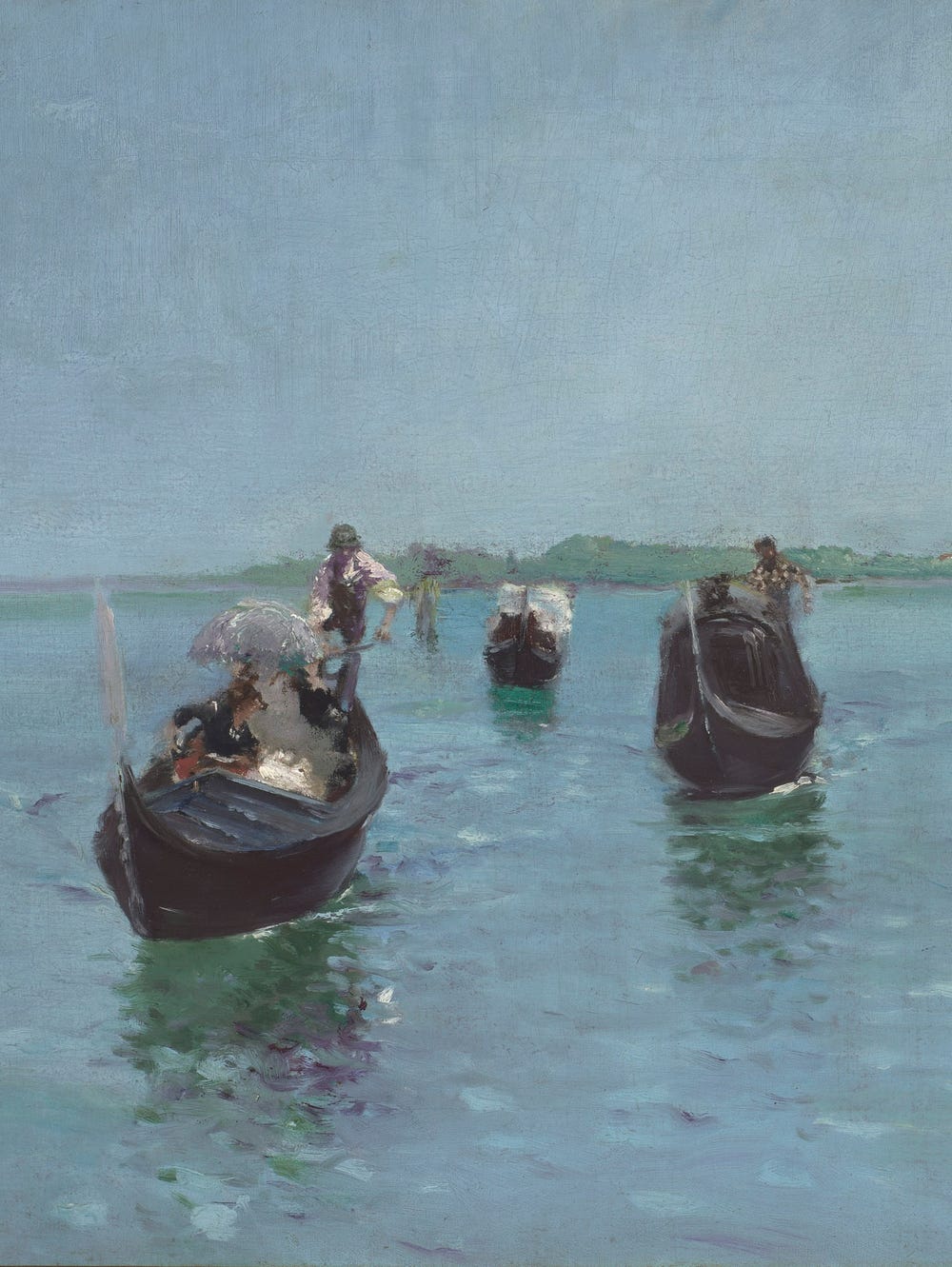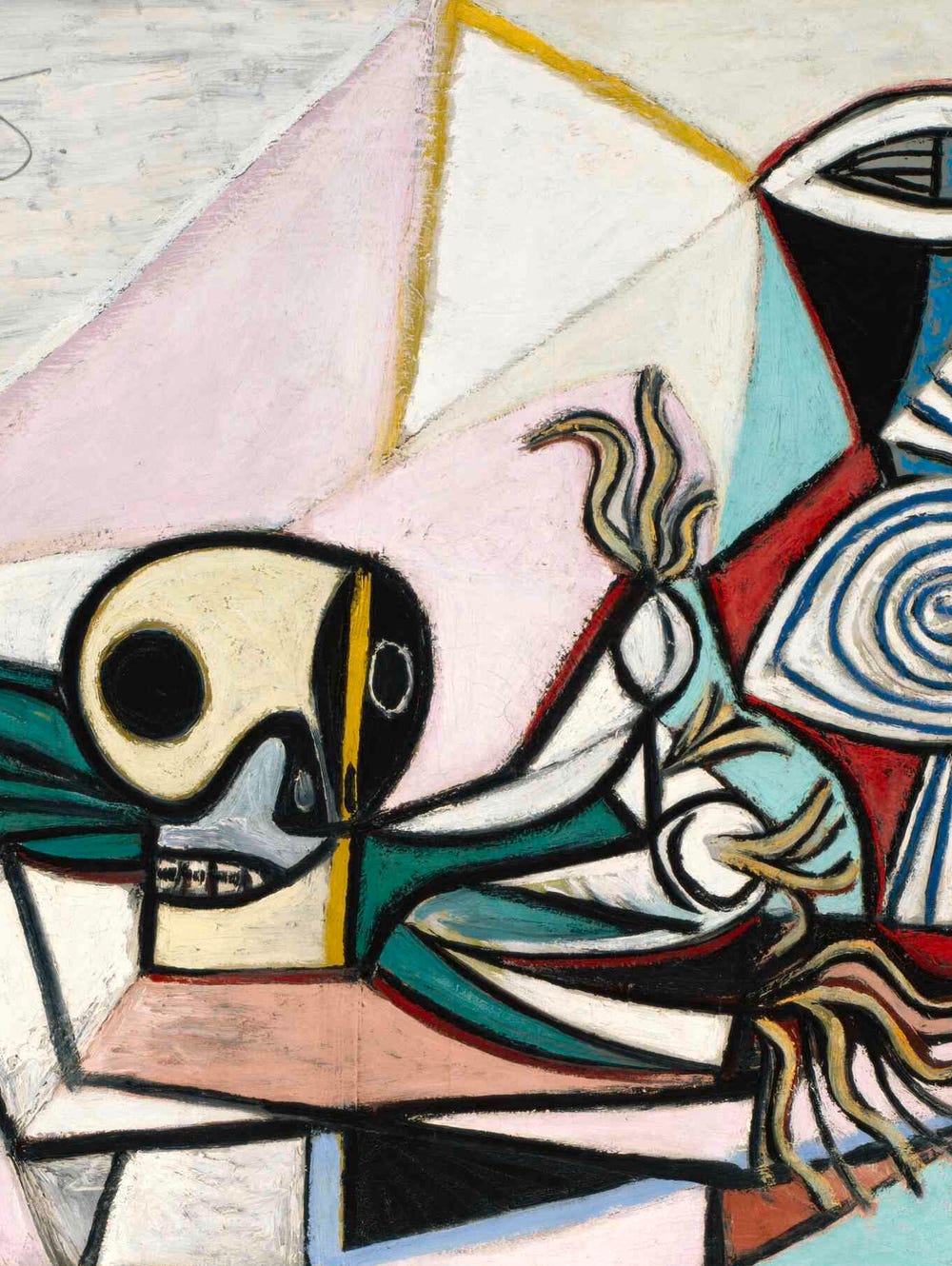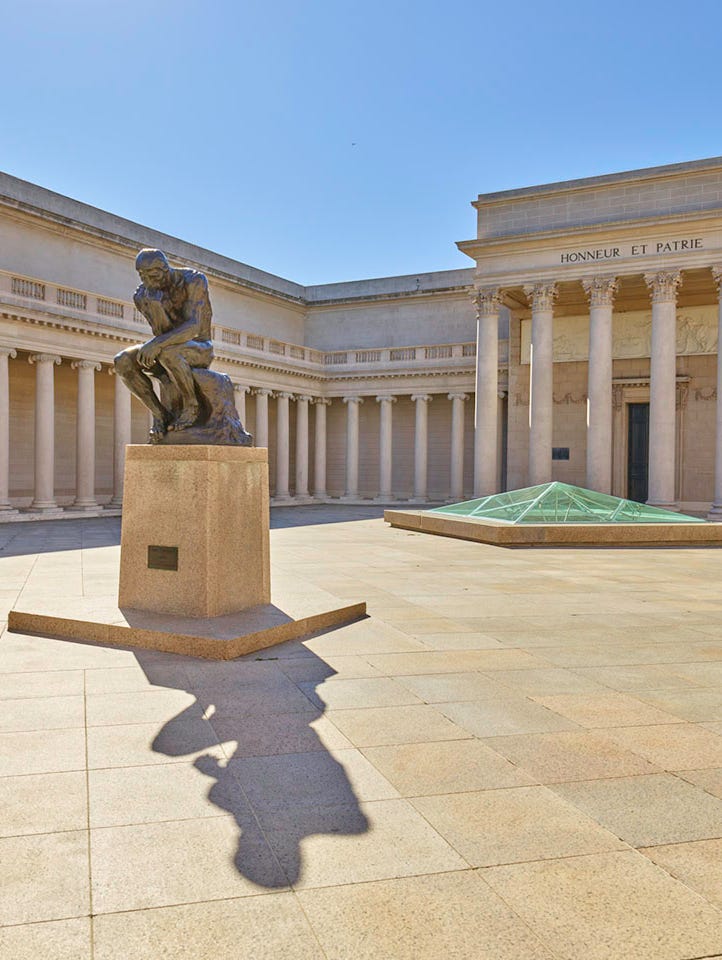Beginner’s Guide to the Legion of Honor: 10 Artworks to Get You Started
By Stefanie Lee, digital project coordinator
June 22, 2023
Claude Monet (1840–1926), Water Lilies (detail), ca. 1914–1917. Oil on canvas, 65 3/8 x 56 in. (166.1 x 142.2 cm), Image: 71 x 57 1/2 in. (180.34 x 146.05 cm). Fine Arts Museums of San Francisco, Museum purchase, Mildred Anna Williams Collection, 1973.3
Have you ever been to a museum and felt intimidated? Out of your element? Are you art-curious but art-shy, too?
You’re not alone. Museums can be challenging to navigate, especially for those who are new to art. It’s hard to know where to start, what to look for, and how to engage.
Here’s a quick guide to help you get situated, so you can get swept away by the art! Highlighting works from each of our collections, from ancient art to European sculpture, it’s designed to help you navigate the museum without getting overwhelmed. Some works are world-famous, others are local standouts, and many are favorites of mine. Be sure to snag a map at the ticketing desk, and check out the works on paper in Gallery 22 and our special exhibitions on the lower level. Explore with an open mind, take note of what draws you in, and veer off course when the moment strikes you. And, of course, don’t miss the view of the Golden Gate Bridge from Lincoln Park.
1. The Thinker, 1904, Court of Honor
Auguste Rodin (1840–1917), Alexis Rudier Fondeur (1874–1952), The Thinker, 1904. Cast bronze, 72 x 38 x 54 (182.9 x 96.5 x 137.2 cm). Fine Arts Museums of San Francisco, Gift of Alma de Bretteville Spreckels, 1924.18.1
Auguste Rodin’s famous sculpture is the first piece you’ll see in the courtyard as you enter the building and one of many Rodins you’ll find throughout the museum. This is not the only version of The Thinker. Rodin enlisted professional reducteurs to cast bronze copies of the work. Other Thinkers are located across the world, including in the United States, France, and Japan.
2. Rabbit-Hunting with Ferrets, 1470–1490, Gallery 2
Rabbit-Hunting with Ferrets, 1470–1490. Wool, silk; slit- and dovetailed-tapestry weave, 120 x 143 in. (304.8 x 363.2 cm). Fine Arts Museums of San Francisco, Museum purchase, M.H. de Young Endowment Fund, 39.4.1. Photograph by Randy Dodson
This textile, made of wool and silk, depicts a busy scene of men and women catching rabbits. While few tapestries showing the day-to-day work of peasants have survived, they were once quite common.
3. Saint John the Baptist, ca. 1600, Gallery 5
Domenikos Theotokopoulos (El Greco) (Greek, active Spain, 1541–1614), Saint John the Baptist, ca. 1600. Oil on canvas, 43 3/4 x 26 in. (111.1 x 66 cm). Fine Arts Museums of San Francisco, Museum purchase, Funds from Various Donors, 46.7
Domenikos Theotokopoulos, better known as El Greco, created this painting for a convent in Spain, where it remained until 1929. In the background, tucked in the hills, you’ll see the Escorial palace, a UNESCO World Heritage Site.
4. Venice, the Grand Canal looking East with Santa Maria della Salute, 1749–1750, Gallery 7
Canaletto (Italian, 1697–1768), Venice, the Grand Canal looking East with Santa Maria della Salute, 1749–1750. Oil on canvas, 52 1/2 x 65 3/8 in. (133.4 x 165.4 cm). Fine Arts Museums of San Francisco, Gift of Diane B. Wilsey. Photograph by Jorge Bachman
This oil painting by Caneletto shows one of the most well-known vistas in Venice, complete with the famous Santa Maria della Salute church in the foreground. The church, completed in 1687, was built as a gesture of goodwill after the city emerged from a plague that killed 50,000. Acquired in 2022 as the world began to emerge from the COVID-19 pandemic, the painting continues to represent hope and renewal.
5. Still Life with Plums and a Lemon, 1778, Gallery 7
Anne Vallayer-Coster (1744–1818), Still Life with Plums and a Lemon, 1778. Oil on canvas, 16 3/8 x 18 5/8 in. (41.6 x 47.3 cm). Fine Arts Museums of San Francisco, Gift of Mr. and Mrs. Louis A. Benoist, 1960.30
When Anne Vallayer-Coster was admitted to Paris’s prestigious Académie royale de peinture et de sculpture in 1770, she earned one of only four spots for women. As women were not allowed to attend the academy’s life drawing classes, she instead developed her skills depicting other natural forms, such as the fruit in this still life. Why do you think she chose to show the lemon partially peeled and fallen blossoms on the table?
6. Salon Doré from the Hôtel de la Trémoille, Paris, ca. 1781, Gallery 11
Salon Doré from the Hôtel de la Trémoille, Paris, ca. 1781. Gilt and painted wood, plaster, stone, and mercury-gilded glass, 360 x 372 in. (914.4 x 944.9 cm). Fine Arts Museums of San Francisco, Gift of Mr. and Mrs. Richard S. Rheem, 1959.123.2
The Salon Doré was designed during the reign of Louis XVI in France. It was first installed at the Hôtel de la Trémoille in Paris, but has since moved locations at least six times. It found a home at the Legion of Honor in 1959.
7. Portrait of Hyacinthe Gabrielle Roland, 1791, Gallery 16
Elisabeth Louise Vigée-LeBrun, Hyacinthe Gabrielle Roland, 1791. Oil on canvas, 39 x 29 1/2 in. (99.1 x 74.9 cm). Fine Arts Museums of San Francisco, museum purchase, Mildred Anna Williams Collection, Bequest Fund of Henry S. Williams in memory of H.K.S. Williams, 1991.29
Like Anne Vallyer-Coster, artist Elisabeth Louise Vigée-LeBrun was one of the few female members of the Académie royale in Paris. At the start of the French Revolution, she fled to Rome (as she had been a painter for the queen), where she flourished as a portraitist. Her subject in this work, Hyacinthe-Gabrielle Roland, was an actress in France who became the mistress, and eventually the wife, of Richard Wellesley, a British aristocrat.
8. Water Lilies, ca. 1914–1917, Gallery 19
Claude Monet (1840–1926), Water Lilies, ca. 1914–1917. Oil on canvas, 65 3/8 x 56 in. (166.1 x 142.2 cm), Image: 71 x 57 1/2 in. (180.34 x 146.05 cm). Fine Arts Museums of San Francisco, Museum purchase, Mildred Anna Williams Collection, 1973.3
You may recognize these serene water lilies, part of a series by Claude Monet, modeled on his own Japanese-inspired water garden. Try viewing the lilies from different distances and note when they shift from swirls of paint into fully formed blossoms.
9. Eiffel Tower, ca. 1889, Gallery 19
Georges Seurat (1859–1891), Eiffel Tower, ca. 1889. Oil on wood panel, 9 7/8 x 6 3/16 in. (25.083 x 15.716 cm). Fine Arts Museums of San Francisco, Museum purchase, William H. Noble Bequest Fund, 1979.48
Georges Seurat invented the technique known as pointillism. Like you did with Water Lilies, view the tower from different vantage points. As you move further away, Seurat’s colorful, distinct dots coalesce into an image of one of the most famous landmarks in the world.
10. Season sarcophagus, 260–280 AD, Hall of Antiquities
Season sarcophagus, 260–280 AD. Marble with traces of polychromy, 19 x 19 x 70 (48.3 x 48.3 x 177.8 cm). Fine Arts Museums of San Francisco, Museum purchase, M. H. de Young Endowment Fund, 54662
This intricate marble sarcophagus was created for a Roman noblewoman, shown at its center. She is surrounded by figures and symbols depicting the four seasons, which also represent the different phases of her life and highlight the passage of time.
Note: Artworks are often rotated due to their sensitivity to light or loaned out for exhibitions at other museums. If not all of these works are on view when you visit, don’t worry. There is plenty more to see!
